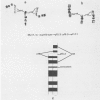Abstract
A proband, clinically thought to have trisomy 10p, was found to have an inverted duplication of 10p [46, XY, inv dup(10)(qter----p15.3::p15.3----p 11.1:)]. The phenotypic findings and cytogenetic observations were supported by relevant biochemical studies. The activity of phosphofructokinase (platelet-type; PFKP), previously localized to 10p, and hexokinase-I (HKI), putatively on 10p, demonstrated 153% and 149% of control activity in the proband's fibroblasts. These gene-dosage effects confirmed the clinical and cytogenetic observations as well as the localization of HKI to 10p. Additionally, phosphofructokinase (PFK) and hexokinase (HK), which are control points in the glycolytic pathway, were shown to be syntenic.
Full text
PDF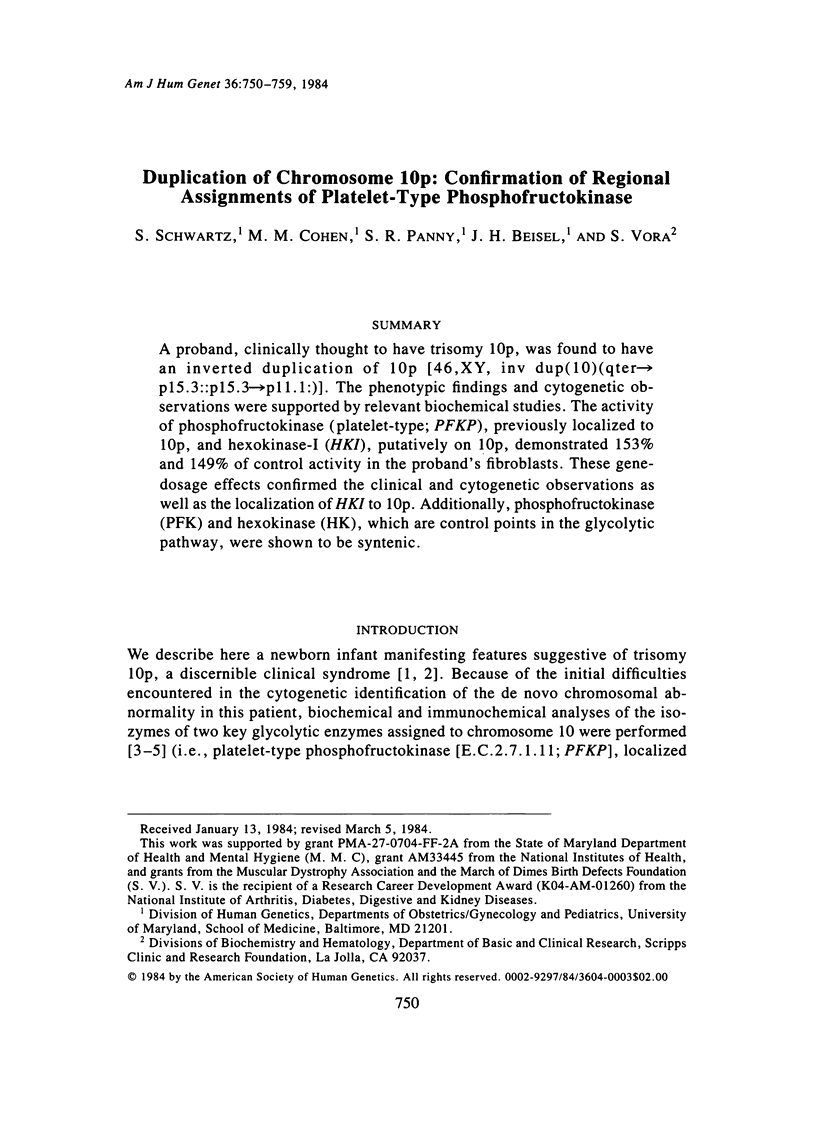
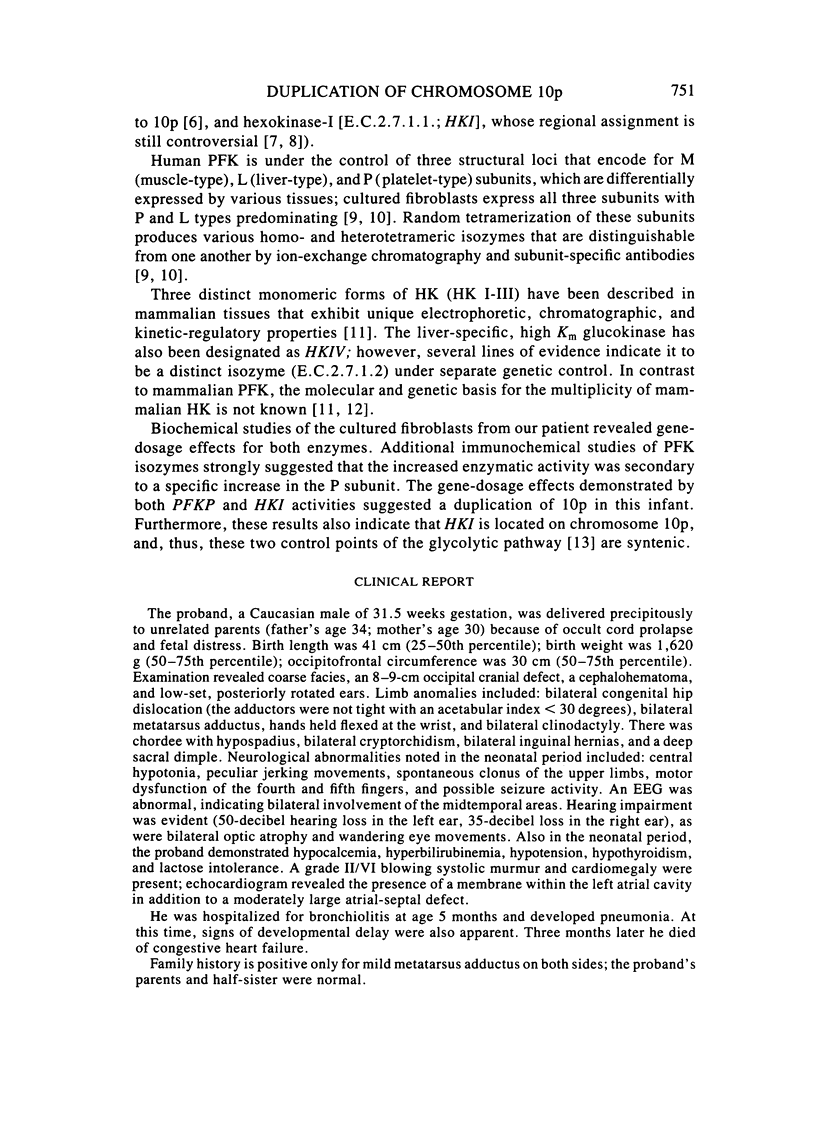
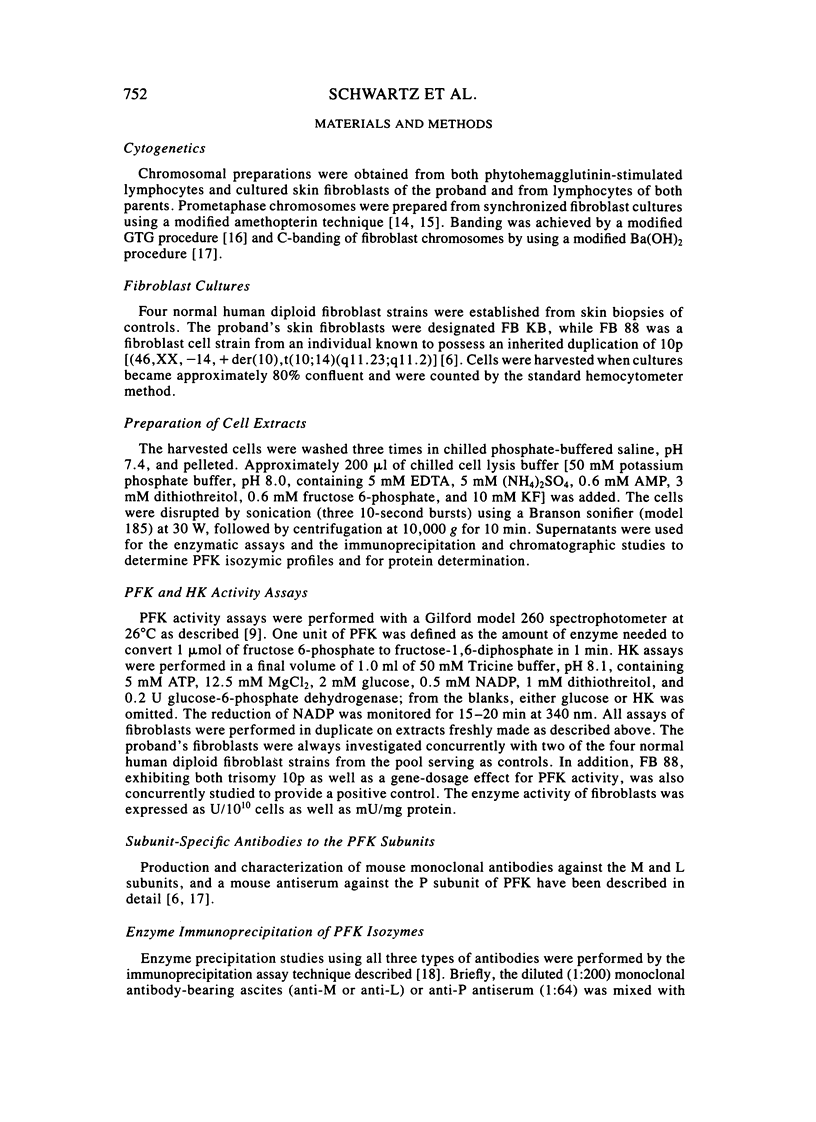
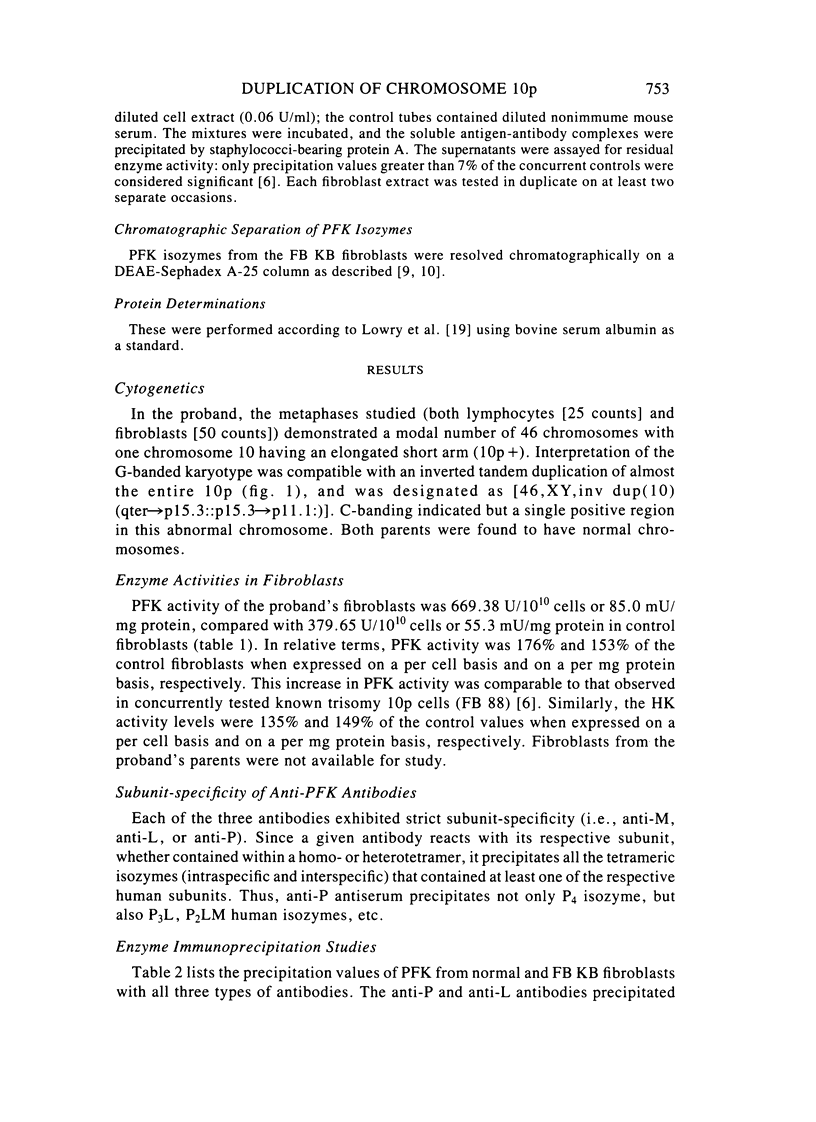
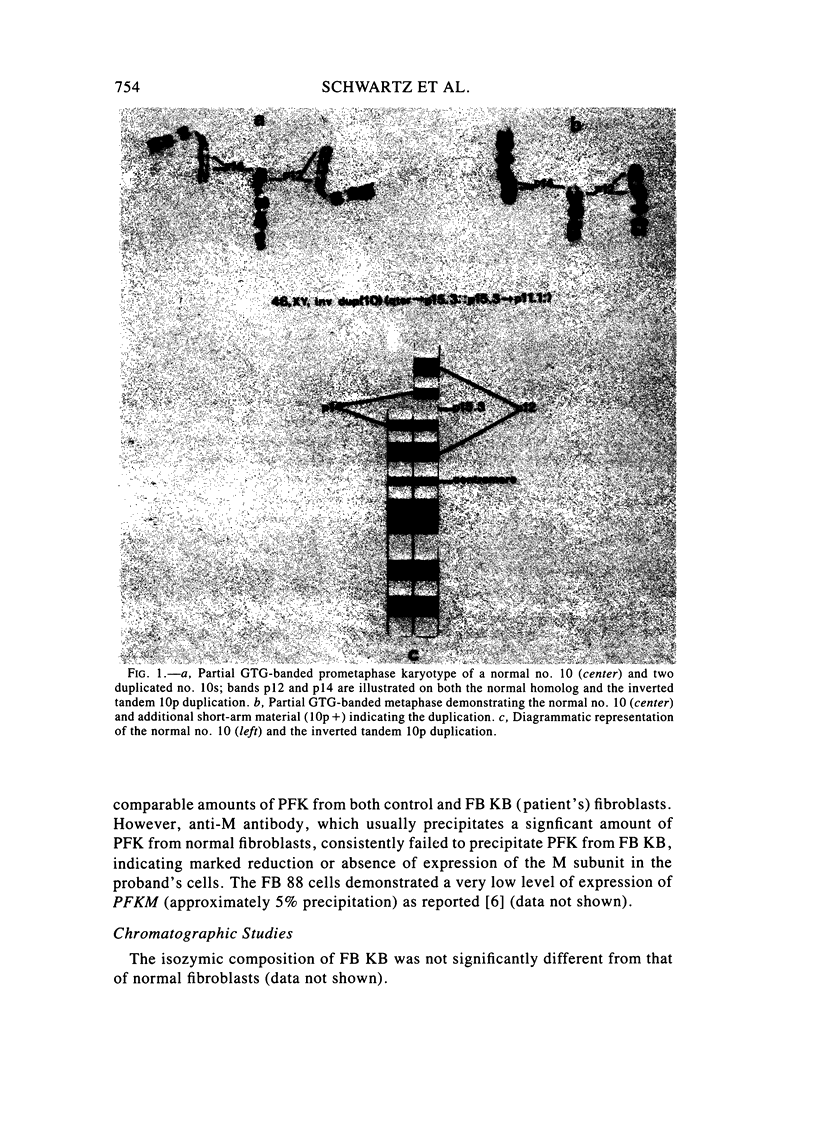
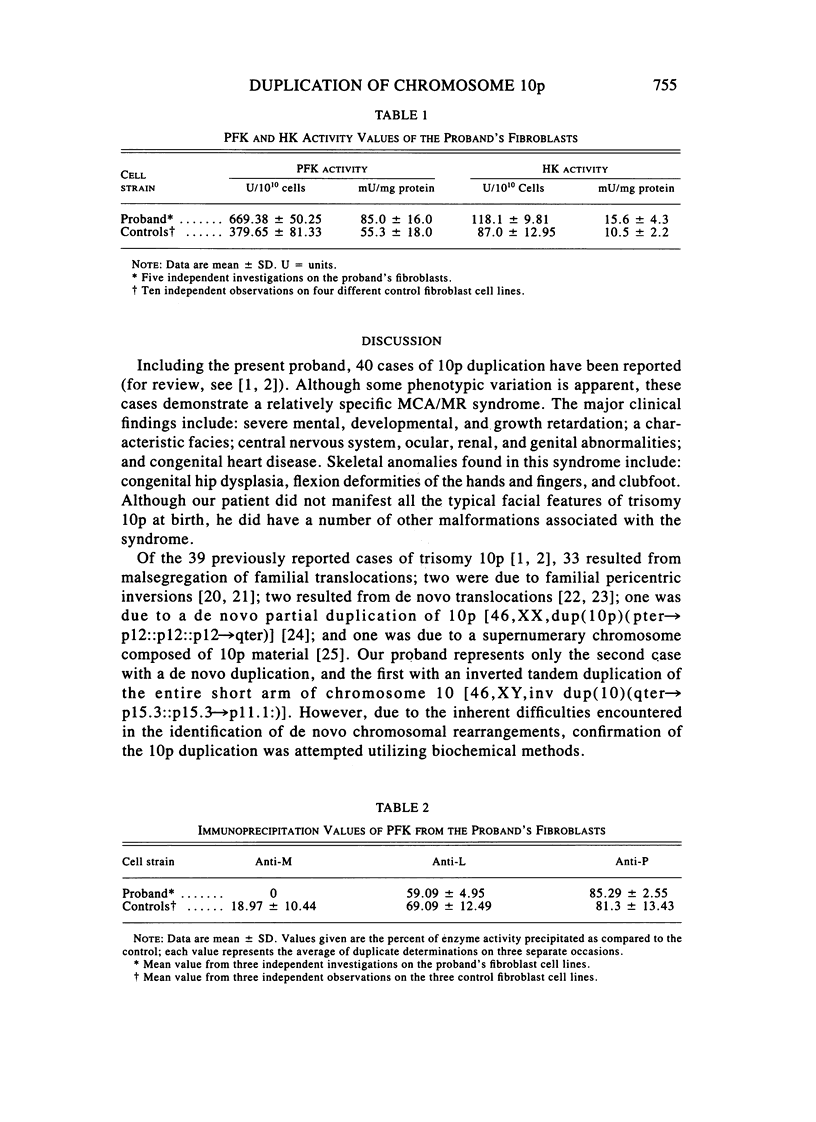
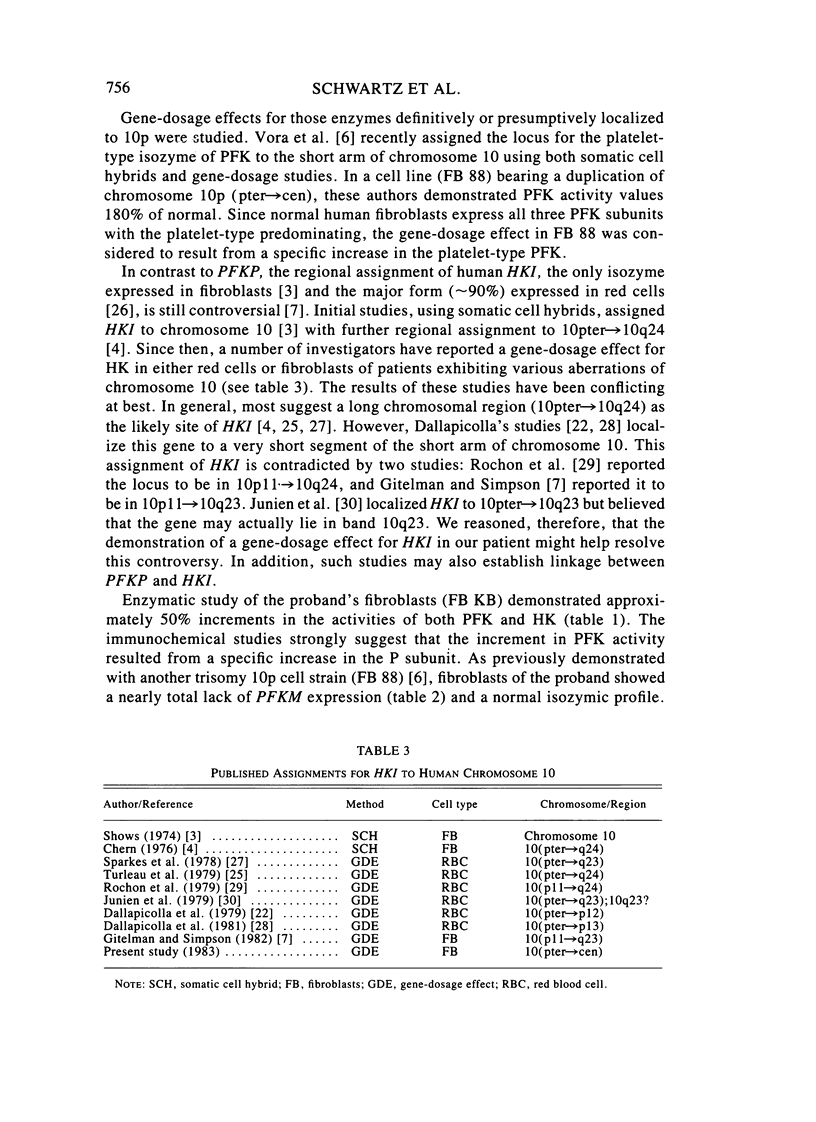
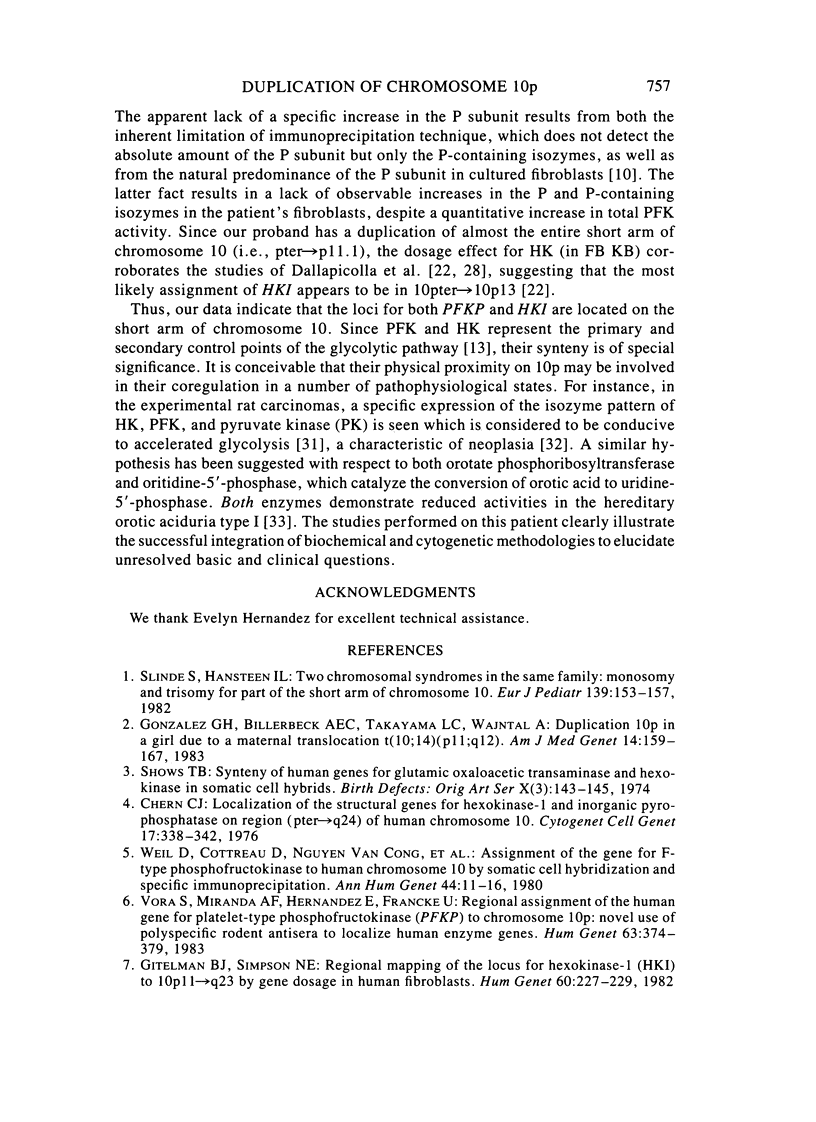
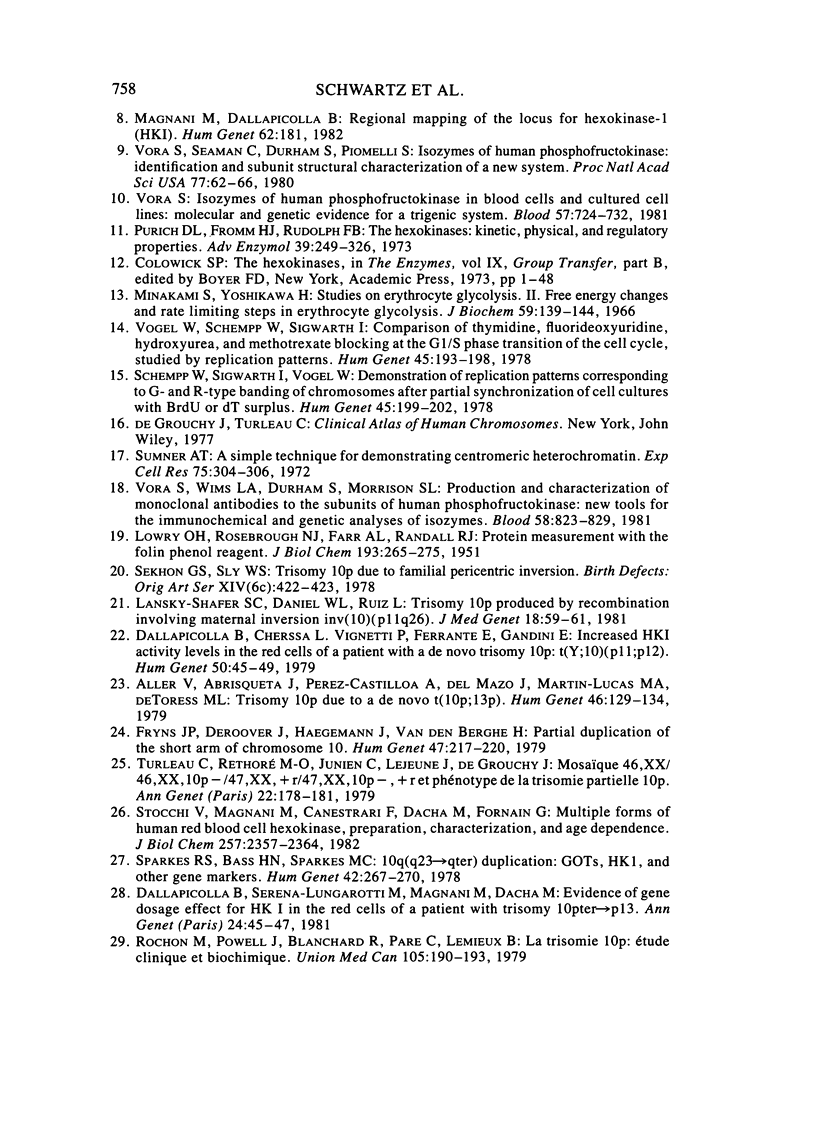
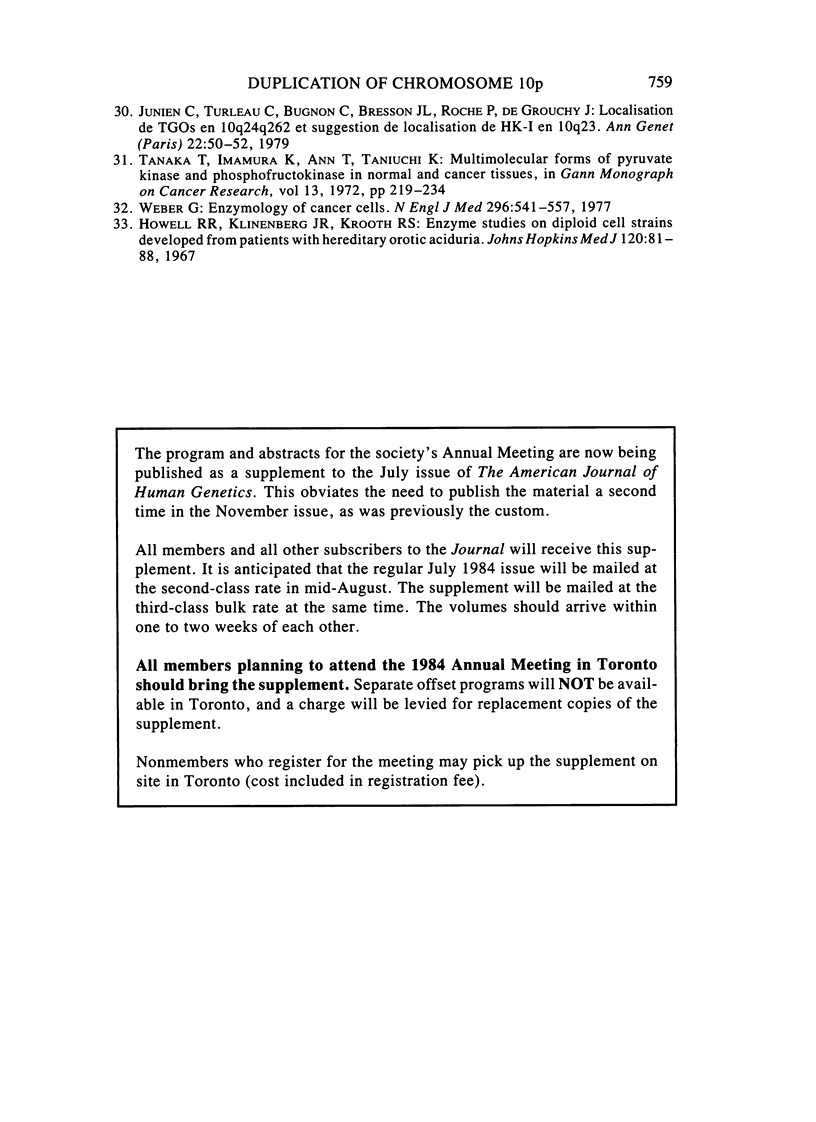
Images in this article
Selected References
These references are in PubMed. This may not be the complete list of references from this article.
- Aller V., Abrisqueta J. A., Pérez-Castillo A., del Mazo J., Martín-Lucas M. A., de Torres M. L. Trisomy 10p due to a de novo t(10p;13p). Hum Genet. 1979 Jan 25;46(2):129–134. doi: 10.1007/BF00291912. [DOI] [PubMed] [Google Scholar]
- Chern C. J. Localization of the structural genes for hexokinase-1 and inorganic pyrophosphatase on region (pter-->q24) of human chromosome 10. Cytogenet Cell Genet. 1976;17(6):338–342. doi: 10.1159/000130736. [DOI] [PubMed] [Google Scholar]
- Dallapiccola B., Chessa L., Vignetti P., Ferrante E., Gandini E. Increased HK1 activity levels in the red cells of a patient with a de novo trisomy 10p: t(Y;10)(p11;p12). Hum Genet. 1979;50(1):45–49. doi: 10.1007/BF00295588. [DOI] [PubMed] [Google Scholar]
- Dallapiccola B., Serena Lungarotti M., Magnani M., Dacha M. Evidence of gene dosage effect for HK 1 in the red cells of a patient with trisomy 10pter leads to p13. Ann Genet. 1981;24(1):45–47. [PubMed] [Google Scholar]
- Fryns J. P., Deroover J., Haegeman J., Van den Berghe H. Partial duplication of the short arm of chromosome 10. Karyotype: 46,XX,dup(10p)(pter to p12::p12::p12 to qter). Hum Genet. 1979 Mar 12;47(2):217–220. doi: 10.1007/BF00273206. [DOI] [PubMed] [Google Scholar]
- Gitelman B. J., Simpson N. E. Regional mapping of the locus for hexokinase-1 (HK1) to 10p11 equals to q23 by gene dosage in human fibroblasts. Hum Genet. 1982;60(3):227–229. doi: 10.1007/BF00303008. [DOI] [PubMed] [Google Scholar]
- Gonzalez C. H., Billerbeck A. E., Takayama L. C., Wajntal A. Duplication 10p in a girl due to a maternal translocation t(10;14) (p11:p12). Am J Med Genet. 1983 Jan;14(1):159–167. doi: 10.1002/ajmg.1320140122. [DOI] [PubMed] [Google Scholar]
- Howell R. R., Klinenberg J. R., Krooth R. S. Enzyme studies on diploid cell strains developed from patients with hereditary orotic aciduria. Johns Hopkins Med J. 1967 Feb;120(2):81–88. [PubMed] [Google Scholar]
- LOWRY O. H., ROSEBROUGH N. J., FARR A. L., RANDALL R. J. Protein measurement with the Folin phenol reagent. J Biol Chem. 1951 Nov;193(1):265–275. [PubMed] [Google Scholar]
- Lansky-Shafer S. C., Daniel W. L., Ruiz L. Trisomy 10p produced by recombination involving maternal inversion inv(10)(pllq26). J Med Genet. 1981 Feb;18(1):59–61. doi: 10.1136/jmg.18.1.59. [DOI] [PMC free article] [PubMed] [Google Scholar]
- Magnani M., Dallapiccola B. Regional mapping of the locus for hexokinase-1 (HK1) Hum Genet. 1982;62(2):181–181. doi: 10.1007/BF00282313. [DOI] [PubMed] [Google Scholar]
- Minakami S., Yoshikawa H. Studies on erythrocyte glycolysis. II. Free energy changes and rate limitings steps in erythrocyte glycolysis. J Biochem. 1966 Feb;59(2):139–144. doi: 10.1093/oxfordjournals.jbchem.a128274. [DOI] [PubMed] [Google Scholar]
- Purich D. L., Fromm H. J., Rudolph F. B. The hexokinases: kinetic, physical, and regulatory properties. Adv Enzymol Relat Areas Mol Biol. 1973;39:249–326. doi: 10.1002/9780470122846.ch4. [DOI] [PubMed] [Google Scholar]
- Schempp W., Sigwarth I., Vogel W. Demonstration of replication patterns corresponding to G- and R-type banding of chromosomes after partial synchronization of cell cultures with BrdU or dT surplus. Hum Genet. 1978 Dec 18;45(2):199–202. doi: 10.1007/BF00286963. [DOI] [PubMed] [Google Scholar]
- Slinde S., Hansteen I. L. Two chromosomal syndromes in the same family: monosomy and trisomy for part of the short arm of chromosome 10. Eur J Pediatr. 1982 Oct;139(2):153–157. doi: 10.1007/BF00441502. [DOI] [PubMed] [Google Scholar]
- Sparkes R. S., Bass H. N., Sparkes M. C. 10q(q23 leads to qter) duplication: GOTs, HK1, and other gene markers. Hum Genet. 1978 Jun 27;42(3):267–270. doi: 10.1007/BF00291306. [DOI] [PubMed] [Google Scholar]
- Stocchi V., Magnani M., Canestrari F., Dachà M., Fornaini G. Multiple forms of human red blood cell hexokinase. Preparation, characterization, and age dependence. J Biol Chem. 1982 Mar 10;257(5):2357–2364. [PubMed] [Google Scholar]
- Sumner A. T. A simple technique for demonstrating centromeric heterochromatin. Exp Cell Res. 1972 Nov;75(1):304–306. doi: 10.1016/0014-4827(72)90558-7. [DOI] [PubMed] [Google Scholar]
- Turleau C., Rethoré M. O., Junien C., Lejeune J., de Grouchy J. Mosaique 46,XX/46,XX,10p-/47,XX,+r/47,XX,10p-,+r et phénotype de la trisomie partielle 10p. Ann Genet. 1979;22(3):178–181. [PubMed] [Google Scholar]
- Vogel W., Schempp W., Sigwarth I. Comparison of thymidine, fluorodeoxyuridine, hydroxyurea, and methotrexate blocking at the G1/S phase transition of the cell cycle, studied by replication patterns. Hum Genet. 1978 Dec 18;45(2):193–198. doi: 10.1007/BF00286962. [DOI] [PubMed] [Google Scholar]
- Vora S. Isozymes of human phosphofructokinase in blood cells and cultured cell lines: molecular and genetic evidence for a trigenic system. Blood. 1981 Apr;57(4):724–732. [PubMed] [Google Scholar]
- Vora S., Miranda A. F., Hernandez E., Francke U. Regional assignment of the human gene for platelet-type phosphofructokinase (PFKP) to chromosome 10p: novel use of polyspecific rodent antisera to localize human enzyme genes. Hum Genet. 1983;63(4):374–379. doi: 10.1007/BF00274765. [DOI] [PubMed] [Google Scholar]
- Vora S., Seaman C., Durham S., Piomelli S. Isozymes of human phosphofructokinase: identification and subunit structural characterization of a new system. Proc Natl Acad Sci U S A. 1980 Jan;77(1):62–66. doi: 10.1073/pnas.77.1.62. [DOI] [PMC free article] [PubMed] [Google Scholar]
- Vora S., Wims L. A., Durham S., Morrison S. L. Production and characterization of monoclonal antibodies to the subunits of human phosphofructokinase: new tools for the immunochemical and genetic analyses of isozymes. Blood. 1981 Oct;58(4):823–829. [PubMed] [Google Scholar]
- Weber G. Enzymology of cancer cells (second of two parts). N Engl J Med. 1977 Mar 10;296(10):541–551. doi: 10.1056/NEJM197703102961005. [DOI] [PubMed] [Google Scholar]
- Weil D., Cottreau D., Nguyen Van Cong, Rebourcet R., Foubert C., Gross M. S., Dreyfus J. C., Kahn A. Assignment of the gene for F-type phosphofructokinase to human chromosome 10 by somatic cell hybridization and specific immunoprecipitation. Ann Hum Genet. 1980 Jul;44(Pt 1):11–16. doi: 10.1111/j.1469-1809.1980.tb00941.x. [DOI] [PubMed] [Google Scholar]



